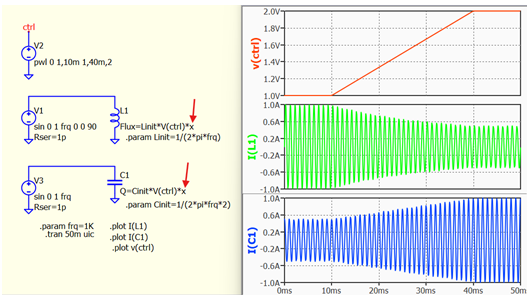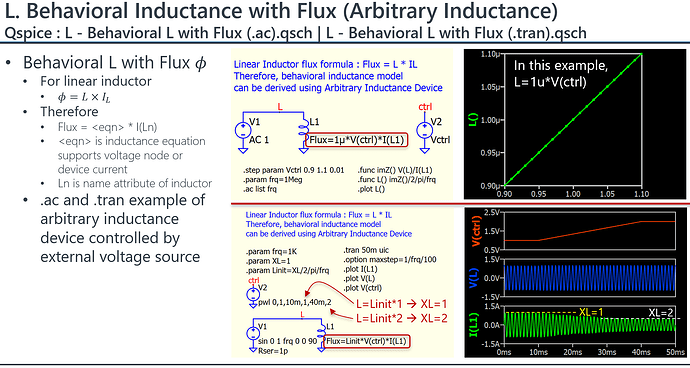In the QSpice, we can have a resistor with its value set to a node voltage as follows:
R={V(node01)},
However, when I am trying to do something similar with an inductor such as L={V(node01)}, it does not work. I know that I can create an inductor with a behavioral voltage source, but it would be much easier if we could do this L={V(node01)}. The goal is to have a voltage controlled inductance. Thanks for the help in advance!
Interesting idea.
If QSpice and provide a behavioral inductor, it could do the same for a behavioral capacitor.
Question: How often in real-life does the inductance value (or capacitance value) change in the middle of a sim? Although the same could be said of a resistor, there are reasons for a behavioral resistor for implementing a potentiometer or source resistance from power supplies that change on load or temperature.
If your goal is to run multiple simulation runs with different values of inductance, you can already do this by stepping a parameter assigned to the inductance value of the inductor.
The same is true for caps as well.
Len
Qspice offers behavioral inductance and capacitance, Goto Help, Device Reference, C. Capacitor and L. Inductor for information. My device guideline also documented that.
Device Reference Guide by KSKelvin - Github
Capacitor offers Charge-Based (Q=) or Capacitance-Based (C=)
Inductor only offers Flux-Based (FLUX=) currently
This is how to use Flux-Based Inductance Device for a Voltage Controlled Inductor.
Good to know.
To answer my previous question: There are real inductive and capacitive components that change L or C values on the fly. I remember using old tech AM/FM radio where you adjust the tank circuit by changing the effective inductance (less popular) or the capacitance (more popular). Hence a need for variable C or L values in a sim.
Len
Thank you so much for all the clarifications! Helps a lot.
Hi,
Just like in LTSpice ![]() , we can use the variable “x” as the voltage across a capacitor or the current through an inductor.
, we can use the variable “x” as the voltage across a capacitor or the current through an inductor.

